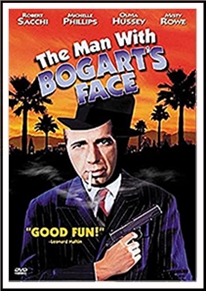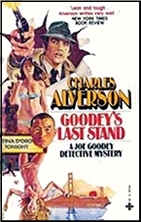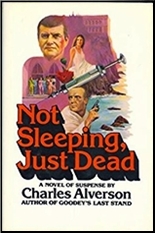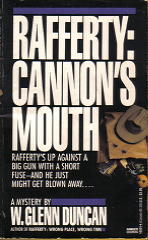Wed 22 Apr 2020
Death Noted: ANDREW J. FENADY (1928-2020)
Posted by Steve under Obituaries / Deaths Noted[5] Comments
Screenwriter, producer, actor and novelist Andrew J. Fenady, born on October 4 , 1928, died on April 16 , 2020 in Los Angeles, California. His entry in the Bibliography of Crime Fiction IV, by Allen J. Hubin, is small:
The Man with Bogart’s Face. Regnery 1977 [Sam Marlow]
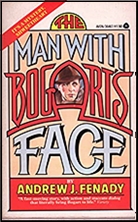
The Secret of Sam Marlow. Contemporary 1980 [Sam Marlow]

Mulligan. Pinnacle 1989
But says Kevin Burton Smith about Sam Marlowe on his Thrilling Detective website:
“Way back in the seventies, during the mini-nostalgia boom for all things from the thirties and forties, actor Robert Sacchi parlayed his spooky resemblance to Humphrey Bogart into a nice little career in TV commercials and movie cameos. The big payoff, though, was the 1980 release of The Man With Bogart’s Face (1980, 20th Century Fox), wherein Sacchi was cast as, well, a man with Bogart’s face.
“It’s essentially a one-gag flick, but it’s a good gag, adapted by Andrew J. Fenady from his own 1977 novel. Seems there’s this former LA cop, short a few crayons shy of a complete set, who retires, and blows his entire life’s savings on plastic surgery so that he can look like his hero and idol, Humphrey Bogart. Then he gets a P.I. ticket, a ’39 Plymouth, a trench coat and fedora, and sets up shop as SAM MARLOW (as in, Sam from Sam Spade, and Marlow from Phillip Marlowe).”
Besides the film adaptation of The Man with Bogart’s Face, other crime or western movies, TV films and series Fenaday was involved with as either writer or producer (and often both) include:
Stakeout on Dope Street (1958)
The Rebel (TV series, 1959-61)
Las Vegas Beat (TV movie, 1961)
Broken Sabre (1965)
Branded (TV series, 1965-66)
Hondo (TV series, 1967)
Chisum (John Wayne, 1970)
Mayday at 40,000 Feet (TV movie, 1976)
A Masterpiece of Murder (TV movie, 1986)
Jake Spanner, Private Eye (TV movie, 1989)
This list is far from complete. For a complete list, go to IMDB here.
I’ll remember him most for the two Sam Marlowe books, however, and the movie made of the first one. It was one of the first books I remember reviewing for the Hartford Courant, well over 40 years ago now.
And thanks to Michael Shonk for being the first to tell me of his passing, well before any other source online.
